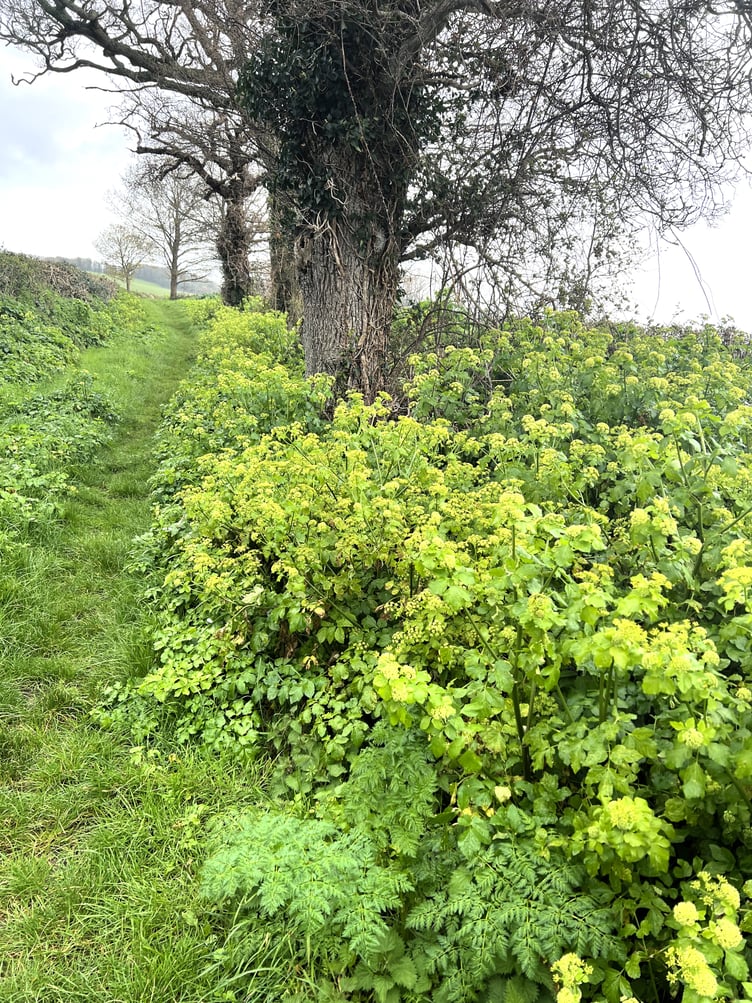FORAGERS collecting wild plants to eat are reporting an unprecedented crop of horse parsley on West Somerset roadsides, growing this spring up to four feet tall.
A distant relative of the more common cow parsley, and also known as Alexanders or wild celery, horse parsley’s roots can be roasted, its shoots cooked like broccoli, and the leaves used in salads.
It is seen from February onwards, but in recent years has been growing earlier and larger than previously.
Blue Anchor resident Tim Taylor, who supplied the picture, said: “Since it tends to grow and flower early it can dominate other plants.
“There was a fair amount of it last year, more than I have noticed before, but this year it has gone mad. A local man told me he had never seen so much of it.
“It’s all along many hedge margins in fields around Blue Anchor and along the A39 on the Withycombe Straight.
“It tends to grow near coasts but it does not tolerate salt so probably grows there because of milder coastal temperatures.
“Recent winters have been milder which may explain its very rapid spread and also the exceptional rainfall this winter and spring may be a factor.”
Yellow-green in colour, with black seeds in autumn, horse parsley, a member of the carrot family, was first brought to England by the Romans from the Canary Isles.
In mediaeval times it was claimed to have medicinal properties and was used as a diuretic, and a cure for scurvy.





Comments
This article has no comments yet. Be the first to leave a comment.